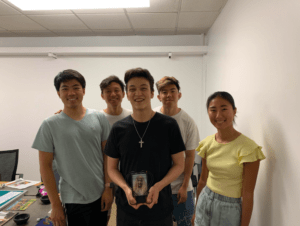Before I took this class, I had a very limited, narrow idea of games and game design. I had spent a lot of late nights playing identity games with friends — some of my favorites are Spyfall, Avalon, Among Us, and One Night Werewolf. However, this was pretty much the limit of my game knowledge. I didn’t play many video games — I had tried League of Legends and a couple of other games but disliked the intensely competitive nature of these games. In my mind, these were games — tests of skill or chance to try to beat other players or overcome challenges. Aside from identity games, which I liked for the social aspect, I wasn’t very open to trying new games.
However, when I took this course, I played a lot of different types of games which I didn’t even know existed! Games like Gone Home, The Almost Gone, and Life is Strange captivated me — these were games with intense emotional stories. As I played these games, I felt happy, sad, and even a bit angry at times. When I finished The Almost Gone, I had to sit down for half an hour and just reflect on the game and its heartbreaking characters. I realized that games aren’t at their core a competition or test of skill — at their core they convey a feeling to players — and this feeling can be an adrenaline rush or a desire to win but it can also be extremely touching and captivating. I suddenly saw games as a new, interactive mechanism to tell stories, to express emotion, and to captivate players in a way that I hadn’t noticed before. And there are so many benefits to this great medium! Players can explore emotional games at their own pace, delve into side stories in as much detail as they would like, and engage directly with characters and places in a way that they can’t in books and movies. In this way, I found that games can create this intense personal connection with players.
I wish I had learned this sooner — I would have loved to implement an emotional arc or narrative in one of the two games I made for this class. I’m still very proud of the games which my team and I did make — but I think a personal connection would have made them stand out even more. I was able to implement a lot of other learnings in our games though! I learned a lot about the importance of playtesting — games aren’t meant to be made in isolation but rather to be iterated on with the help of lots of people. I learned how a game’s theme can deeply impact a game’s experience — and we implemented this to great success in my team’s social game — a food-themed party game. I learned how to scale challenges appropriately to a target audience (again, with the help of playtesting!) and we were able to balance our puzzles well for our final escape room. I learned a lot in this class and am very proud of what we were able to accomplish with our learnings! Next time I make an escape room (which I plan to this summer!), I hope to take this idea of creating an intense, even perhaps emotional connection to players to heart. I want to build an escape room which really sticks with players, which captivates them with an emotional narrative and makes them feel personally connected to the outcome. I don’t yet know how exactly to accomplish this — the time constraint and the adrenaline inherent to an escape room seem foreboding — but with lots of playtesting and creative brainstorming sessions, I look forward to figuring this out!
This isn’t to say that this quarter wasn’t without its challenges however. This was the first time I sat down and designed games, and at first I became very discouraged. Round after round of playtesting, iteration upon iteration — it sometimes seemed that we weren’t moving anywhere. Partway through designing our first game, we almost gave up on our idea entirely after becoming discouraged after yet another round of playtesting with seemingly nothing to show for it. But I’m glad we didn’t! In the end, we brainstormed and iterated further, and our “a-ha!” moment hit us. The theme aligned with our gameplay, the balance adjusted, and at our final playtest players were smiling and laughing as they dealt out our food-themed identity cards. I don’t know if playtesting will always work out like this — maybe it won’t conclude quite so well sometimes. But, after long weeks of playtesting and exercises, I finally realized that this may not be quite so important. Maybe it won’t always work out, maybe it will sometimes be discouraging — but in the end, we can be confident that we explored an idea to the fullest and know when is the right time to pivot and when we can iterate just a bit further and reach our “a-ha!” moment. This was an important realization, an important growth moment for me — I really learned through experience when and how to stick with an idea and not give up on it so easily. This will certainly help me a lot as I move forwards to designing my next escape room this summer! I look forward to crafting an emotional and compelling narrative-driven escape room with the new friends I made and the old friends I had fun with throughout this course. Thank you so much for such a great quarter!



